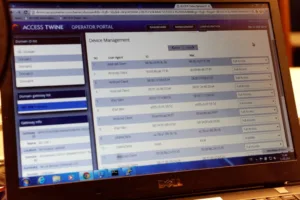Access was showing its latest middleware and browser technology. The browser continues to be developed for TV use and also for auto applications and an announcement at the show was that the browser is now being integrated with Zenterio middleware. The company told us that it has two versions of the browser, the original one based on Safari/Webkit, but for systems with more power and memory, it has a version based on Google Blink. The company has also been developing its DLNA software and has servers and clients. There is a new version 3.1 which supports the latest version of DLNA which is known as “Vidipath”. Vidipath is a subset of DLNA that makes it simpler to ensure that protected content can run for consumers. There is a Vidipath certification programme for devices, and PlugFests have been held already. Separately, the DNLA said 15 device companies and four service providers are already working on Vidipath interoperability. The technology fully supports HTML5 and user experience and control guidelines. It’s likely to be rolled out in the US first because of an FCC mandate.
Finally, we looked at Access’ Twine technology which is a multiscreen technology to support secure delivery of content around the home. The software provides a management layer and it is suitable for home gateways. Access also has back end software so that operators can log and track the remote access to content in real time. The technology helps operators to boost the number of devices that customers are using (and so, ARPU). It also allows easier reporting to content providers. Finally, it allows the development of “Big Data” and access to the IOT. Access told us that Twine can help operators to monitise multiscreen services – for example, it can be used with YuMe advertising technology.

